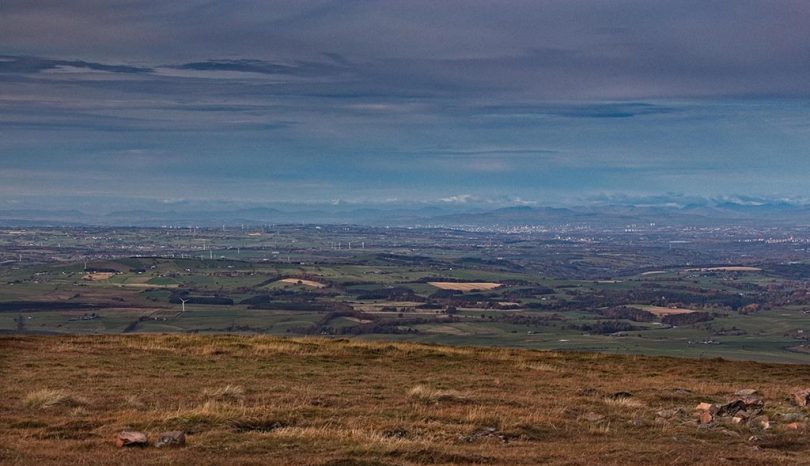Looking north from the isolated landmark of Tinto Hill, over the rolling landscape of mid Lanarkshire, to Greater Glasgow with the Campsie Fells (towards the right) and southern fringes of the Highlands in the distance. Motherwell is on the right hand edge, separated from Hamilton by a narrow strip of the Clyde valley including the artificial Strathclyde Loch, just visible as a small patch of light blue. Behind Motherwell are built-up areas including Airdrie. South-western parts of the city are hidden behind the ridge of the Cathkin Braes. Place-names mentioned are typical of the mix of linguistic origins in this part of Scotland. The Clyde has undergone sound changes since the Clota of ancient times. Glasgow was a straightforward ‘green hollow’ in Cumbric, the northern cousin of Old Welsh. Lanark is recognisable in Welsh llanerch ‘glade’. Airdrie is certainly Celtic, and although there are possibilities in Gaelic its situation would have fitted Cumbric *ardd dref ‘high farm’. Cathkin is one of several place-name reflexes of Gaelic coitchionn, ‘common (land)’. Tinto, distinctive from afar, appears to be from Gaelic teinteach ‘fiery’, from its pink felsite stone or from use for ritual or beacon fires, although Gaelic names are scarce so far into Clydesdale. Motherwell and Hamilton are linguistically Scots or English, the latter a family name from England which largely replaced the Cumbric Cadyou/Cadzow in the 15th century.

